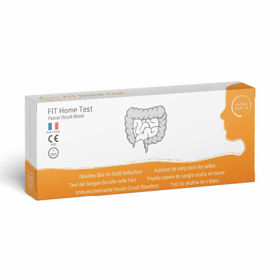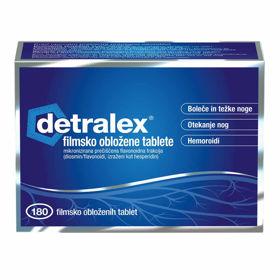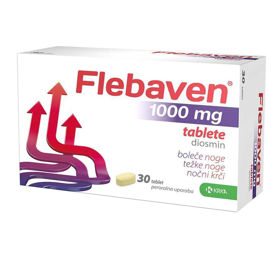Some gastrointestinal diseases can be life-threatening and require urgent treatment, sometimes with surgery. These diseases include bleeding into the gastrointestinal tract, mechanical obstruction of the digestive tract, ileus (temporary absence of regular bowel contractions), appendicitis (inflammation of the appendix), and peritonitis (inflammation of the peritoneum).
BLOOD IN THE Stool - emergencies: General | Symptoms | Places and causes of gastrointestinal bleeding | Diagnosis | Treatment | Questions and Answers | Sources/references
Bleeding can occur anywhere along the digestive tract, from the mouth to the buttocks. It can appear as blood in the stool or eruption or be hidden (occult) and only detected by tests.
Bleeding anywhere in the gastrointestinal tract can be aggravated by another disease in which blood clotting is impaired.
Symptoms
Possible symptoms are blood vomiting (hematemesis), passing of black, tarry stools (melena), and visible discharge of blood from the rectum (hematochezia). Black, tarry stools are usually the result of bleeding high up in the gastrointestinal tract, e.g., in the stomach or duodenum; the black color is the result of several hours of exposure of the blood to stomach acid and bacterial digestion before it leaves the body.
Image: People with prolonged bleeding show symptoms of anemia.
.jpg)
Approximately 60 ml of blood causes tarry stool. One-time heavy bleeding can cause tarry stools for a whole week, so repeated discharge of tarry stools does not always mean constant bleeding.
People with prolonged bleeding show symptoms of anemia, such as rapid tiredness, ashen skin, chest pain, and dizziness. In people without these symptoms, the doctor may detect an abnormal blood pressure drop in a person sitting up from a lying position.
Symptoms that indicate more significant blood loss are rapid heart rate, low blood pressure, and decreased urine output. A person may also have cold, clammy hands and feet. Reduced blood supply to the brain resulting from blood loss can lead to confusion, disorientation, drowsiness, and even shock.
Places and causes of gastrointestinal bleeding:
| esophagus |
- torn tissue - bleeding skin veins - cancer |
| stomach |
- cancerous or non-cancerous ulcer - irritation (gastritis), e.g., due to acetylsalicylic acid or Helicobacter pylori bacteria |
| small intestine |
- non-cancerous duodenal ulcer - cancerous or non-cancerous tumor |
Symptoms of more severe blood loss can be different, depending on the presence of some other diseases. A person with coronary artery disease, e.g., suddenly develops angina pectoris or symptoms of a heart attack.
Image: In people with severe bleeding, the symptoms of other diseases may worsen.
.jpg)
Symptoms of other diseases may worsen in people with severe gastrointestinal bleeding, e.g., heart failure, high blood pressure, lung disease, and kidney disease. In people with liver disease, bleeding into the intestine causes a build-up of toxins, leading to symptoms such as personality changes and changes in consciousness and mental abilities (hepatic encephalopathy).
Diagnosis
After severe blood loss, a type of blood test called a hematocrit measurement usually shows a low concentration of red blood cells. Knowing the symptoms that led to the bleeding can help the doctor determine the cause of the bleeding. Abdominal pain relieved by food or antacids indicates a peptic ulcer; however, bleeding from an ulcer is often not painful. Bleeding from the stomach, which appears as blood in the stool, can be caused by medicines that damage the stomach lining, e.g., acetylsalicylic acid.
A patient with gastrointestinal bleeding that has no flow and is unexplainably worse is examined for the possibility of cancer. A patient with difficulty swallowing is examined for cancer or narrowing of the esophagus. Very violent vomiting and unsuccessful attempts to vomit by choking just before bleeding indicate a laceration of the esophagus; about half of patients with such a tear previously don't vomit.
Constipation or diarrhea, along with bleeding or occult blood in the stool, can be caused by cancer or a polyp in the lower intestine, especially in people over 45 years of age. Fresh blood on the surface of the stool can be the result of hemorrhoids or diseases inside the rectum, e.g., cancer.Video content: Understanding the causes of blood in stool.

The doctor examines the patient and finds the cause of the bleeding. During a rectal examination, e.g., the doctor looks for hemorrhoids, rectal fissures, and tumors. Then they do additional tests, which are chosen depending on whether the doctor suspects that the bleeding originates from the upper part of the gastrointestinal tract (esophagus, stomach, and duodenum) or the lower part of the gastrointestinal tract (lower part of the small intestine, large intestine, rectum, and buttocks).
When problems in the upper part of the gastrointestinal tract are suspected, investigations begin with inserting a tube through the nose into the stomach; fluid is removed through this tube. Stomach contents resembling coffee grounds result from partial blood digestion, indicating that bleeding is slow or has stopped. Blood that is bright red all the time indicates active, heavy bleeding.
The doctor often helps himself by using a flexible endoscope, which examines the esophagus, stomach, and duodenum and looks for the source of the bleeding. When the doctor does not detect gastritis, a stomach ulcer, or duodenum, he may do a biopsy (take a tissue sample for examination under a microscope). A biopsy can show whether the bleeding is due to Helicobacter pylori infection. Such an infection is treated (and usually cured) with antibiotics.
The doctor usually looks for possible polyps and cancer with an endoscopy. He can look directly inside the lower part of the intestine with an anoscope, a flexible sigmoidoscopy, or a colonoscope. If all these tests do not find the cause of the bleeding, they can do an angiography (contrast imaging of the vessels). These techniques are helpful, especially in discovering whether the cause of the bleeding is a vascular malformation.
Treatment
In more than 80 percent of people with gastrointestinal bleeding, the body's defense mechanisms stop the bleeding. People whose bleeding does not stop and therefore continue to bleed, or who have symptoms of significant blood loss, are often admitted to hospital, usually to the intensive care unit.
A transfusion is required if the patient has lost a lot of blood. Instead of whole blood preparations, concentrated preparations of red blood cells are preferred to avoid overloading the bloodstream with fluid. After correcting the amount of blood in the patient's bloodstream, the patient continues to be carefully observed to avoid any signs of further bleeding, such as an increased heart rate, drop in blood pressure, or loss of blood through the mouth or buttocks.
Image: A transfusion is needed if the patient has lost a lot of blood.
.jpg)
Varicose veins in the lower part of the esophagus are treated in several ways. One method involves introducing a catheter with a balloon through the mouth into the esophagus. The balloon is then inflated and presses on the bleeding area. Another possible method involves injecting an irritating chemical substance into the vein, which triggers inflammation and scarring of the vein.
Bleeding from the stomach can often be stopped by procedures performed with an endoscope, e.g., cauterizing bleeding veins with an electric current or injecting a substance that triggers the formation of a blood clot in the vein.
Video content: When is blood in the stool an emergency?

If these interventions are unsuccessful, surgery is required. Bleeding from the lower gastrointestinal tract usually does not require emergency treatment. Sometimes, however, endoscopic intervention or abdominal surgery is necessary. Sometimes, the place of bleeding cannot be determined precisely; in such cases, a part of the intestine is removed.
Questions and answers
Is blood in the stool a cause for concern?
Blood in your stool could mean you have hemorrhoids, constipation, or something more severe like inflammatory bowel disease or cancer. The blood may go away independently, but you should consult a doctor if it lasts more than three weeks or if the bleeding is heavy [1].
What can cause blood in the stool?
Many different problems can cause blood in the stool:
- rectal prolapse
- rectal polyps
- rectal ulcers
- mucosa damage in the colorectal system
- anal fissures
- diverticular bleeding
- ulcerative colitis or Crohn's disease
- colorectal ra[2]
Is bleeding during diarrhea normal?
Acute bloody diarrhea is a medical emergency because it often means disorders that are life-threatening and have urgent consequences for the control of the epidemic in the community. Even if bloody diarrhea is not contagious, it can represent diseases requiring rapid diagnosis and treatment[3].
How common is colorectal cancer?
Colon cancer is the second leading cause of cancer death worldwide. In 2020, there were estimated to be more than 1.9 million new cases of colorectal cancer and more than 930,000 deaths from colorectal cancer[4] worldwide.
How are rectal polyps detected?
The doctor usually looks for possible polyps and cancer with an endoscopy. He can look directly inside the lower part of the intestine with an anoscope, a flexible sigmoidoscopy, or a colonoscope.
Sources and references
Extensive health manual for home use, Youth Book Publishing House
- Blood in Stool: Causes and Treatment - https://www.webmd.com
- When to worry about blood in your stool - https://www.mdanderson.org
- Acute Bloody Diarrhea: A Medical Emergency for Patients of All Ages - https://www.gastrojournal.org
- Colorectal cancer - https://www.who.int











 Facebook
Facebook
 Instagram
Instagram
 info@moja-lekarna.com
info@moja-lekarna.com

